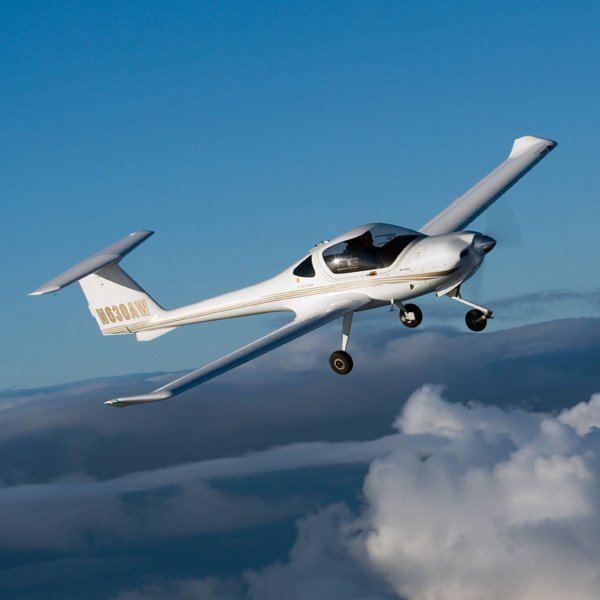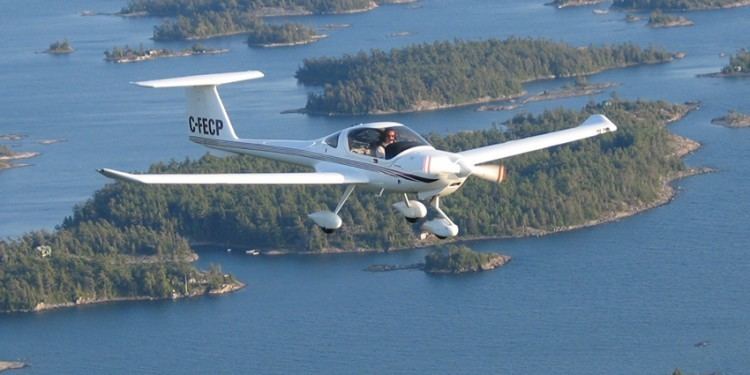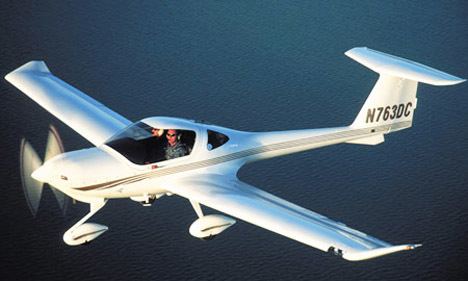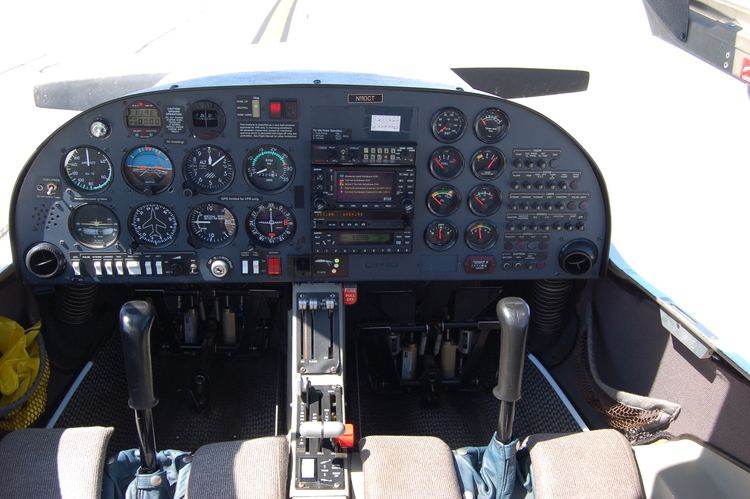Cruise speed 256 km/h Wingspan 11 m Engine type Aircraft engine | Range 1,013 km Weight 529 kg Number of seats 2 | |
 | ||
Unit cost 198,800–238,375 USD (2013) | ||
The Diamond DV20/DA20 Katana is an Austrian-designed two-seat tricycle gear general aviation light aircraft. The design was later built in Canada as the DA20 for the North American market.
Contents

Development

The two-seat DV20 Katana was based on the Super Dimona with reduced wingspan. It was produced in Austria by HOAC (later changed its name to Diamond Aircraft). The Katana first flew in 1991 and gained certification in 1993. The Katana was first shown in public at the 1993 Paris Air Show.

The company built a factory in Canada to produce the DV20 which was designated the DA20. The first DA20 was the Rotax 912 powered A1 Katana produced in Canada in 1994. It was the first Diamond aircraft available for sale in North America. Production of the Continental IO-240-B3B powered C1 Evolution and Eclipse models began in 1998, also in Canada. Production of the A1 Katana is complete but the DA20-C1 is still being constructed in 2010.

The DA20-A1 and C1 are both certified under CAR 523 in Canada and under FAR 23 in the USA. The DA20 is certified in the utility category, and it is permissible to intentionally spin it with flaps in the full up position. In 2004, Diamond received Chinese certification for the DA20. Both models also hold JAA certification.
Although the DA20 is available with instrumentation and avionics suitable for flight under instrument flight rules (IFR), its plastic airframe lacks lightning protection and thus does not qualify for IFR certification.
Design
The Katana is a low-wing cantilever monoplane which features control sticks (as opposed to yokes), composite construction, a bubble canopy, low-mounted wing, a single fuel tank, a T-tail, and a castering nosewheel. All models have composite airframes constructed of glass- and carbon-fiber reinforced plastic. The nose wheel of the DA20 is not linked to the rudder pedals and turns while taxiing are made with differential braking, with rudder steering becoming more effective as airspeed increases. The Rotax engine variants are approved for use with automotive gasoline.
The Katana possesses a higher glide ratio than many of its competitors. The glide ratio of the DA20-C1 is 11:1 and the DA20-A1 is 14:1.
In November 2008 the company announced that it would be offering an Aspen Avionics glass cockpit primary flight display as an option on the DA20. Diamond indicated the Aspen PFD was easy to incorporate into the existing instrument panel design because it mounts in a standard round instrument hole. In October 2009 the company introduced the Garmin G500 glass cockpit as an option.
United States
Embry-Riddle Aeronautical University provided the Academy Flight Screening (AFS) program for the United States Air Force Academy in DA20-C1 Falcons, which were specially ordered with slightly smaller fuel tanks to save weight and primary flight instruments on the right side of the aircraft. Embry-Riddle operated a fleet of DA-20s at the Academy. The AFS program was discontinued in 2007.
Doss Aviation, under contract for the United States Air Force, currently operates a fleet of DA-20s at the Pueblo Memorial Airport in the Initial Flight Training (IFT) program. Potential USAF Pilots, Combat Systems Officers, and RPA pilots that do not have a private pilot's license must go through the Doss screening program and receive time in the DA20 before going on to their respective training programs.
Variants
Civil
The DA20 is popular with flight training schools and is also operated by private individuals. Moncton Flight College in New Brunswick, Canada operates a fleet of 35 Diamond DA20-C1 Eclipses.
Military
Specifications (DA20-C1)
Data from DA20 webpage
General characteristics
Performance
Avionics
